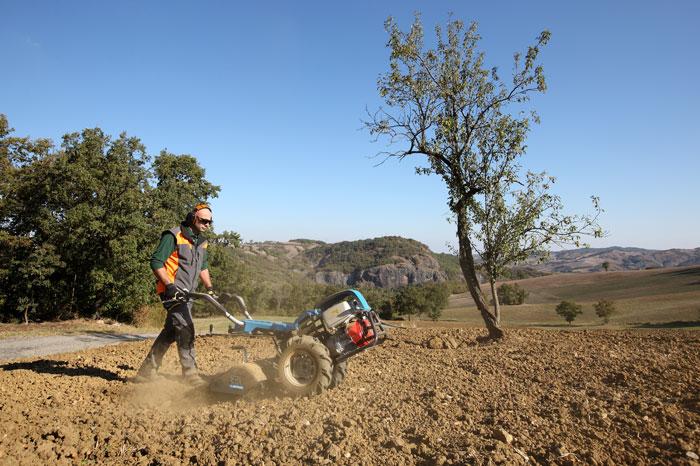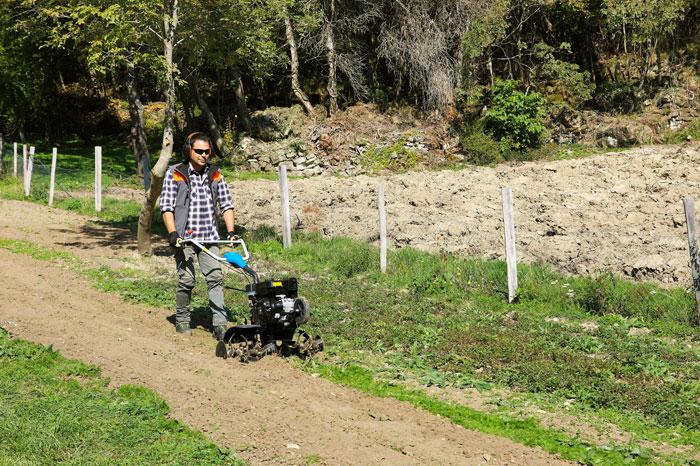The 3 stages of soil cultivation

After a harsh winter, the time has come to start cultivating the soil and preparing your vegetable plot for the new summer season. But when exactly should soil cultivation be performed? Is there an optimal time? Soil cultivation involves three main stages, namely ploughing, tilling and levelling.
First step: ploughing
Ploughing involves breaking up earth into clods and turning it over so that everything on the surface is buried, and vice versa. This is a fundamental step, especially in the case of soil that has been compacted or firm for several years; if the ground is not ploughed, there is a risk that you only cultivate the topsoil, without reaching the deeper layers. Often the effect of ploughing can be enhanced using the green manure technique, which consists of planting or burying crops specifically to build or maintain soil fertility.
Ploughing can be done manually with a spade (digging) or using machines: for larger plots it is advisable to use a tractor, while in the case of small allotments,a Bertolini two wheel tractor is sufficient for the job. The power-to-weight ratio of the two wheel tractor is crucial for proper soil cultivation: for example, models such as the 413 S are specifically designed to cultivate any type of soil, optimising productivity and results.
The best times to plough are October/November or February; avoid cold days, because low temperatures cause the ground to freeze, making it difficult to break up. Precipitation also affects soil cultivation, which is best performed when the earth is dry. If you cultivate soil in unfavourable climatic conditions, you risk getting your machinery stuck in mud and/or creating a crust on top of the soil that makes it harder to cultivate. Once ploughed, the soil must be left to rest for at least two months, after fertilising and enriching it with organic matter.


Second step: tilling
Tilling is a process that involves pulverising clods of earth and mixing them into the soil. Depending on the crops you want to plant, if the soil is soft and yielding then you can skip the ploughing stage and proceed directly to tilling. Tilling should be performed a few days before seedlings are transplanted, and is intended to make the soil soft and friable in order to maximise the growth of your crop.
Third step: levelling
The last step is levelling, which prevents water stagnation due to depressions or height differences.



